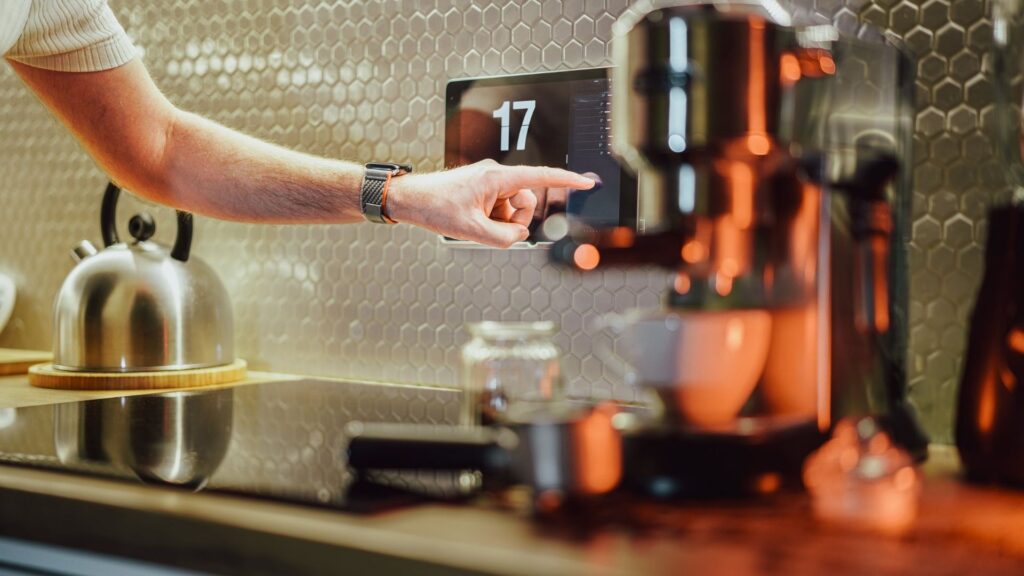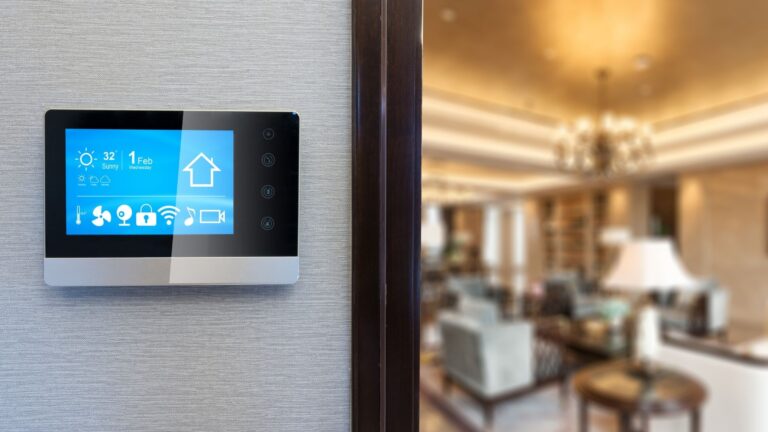The concept of a smart home once existed only in science fiction movies where characters commanded their houses through voice and everything responded perfectly. That fantasy has become surprisingly affordable reality over the past several years. Walk into electronics stores today and you find shelves full of devices labeled as smart products. Thermostats learn your schedule and adjust temperatures automatically. Door locks secure your home from anywhere in the world through your smartphone. Light bulbs change colors and brightness based on voice commands or scheduled routines. Each individual device offers useful features on its own, yet the true potential reveals itself when these technologies communicate and coordinate with each other. A properly integrated smart home responds to your needs through interconnected automation that anticipates what you want before you even ask. The devices share information and trigger actions across different systems to create experiences that feel almost magical in their seamlessness. Understanding how this integration works helps you design a smart home that actually improves your daily life rather than adding complexity and frustration.
The Foundation of Smart Home Communication
Smart home devices need a common language to understand each other and work together effectively. Manufacturers have developed several competing standards and protocols over the years which creates both opportunities and challenges for homeowners. Wi-Fi serves as the most universal connection method because nearly every home already has a wireless network. Devices that connect through Wi-Fi can communicate with your phone and with cloud services that coordinate automation. However, Wi-Fi demands relatively high power consumption which makes it less practical for battery-operated sensors and devices. Zigbee and Z-Wave offer alternative wireless protocols specifically designed for smart home products. These technologies use much less power which allows devices to run for months or years on small batteries. They also create mesh networks where each device helps extend the range and reliability of the entire system.
The protocol your devices use matters less than ensuring they can all communicate through a central hub or controller. This hub acts as the translator and coordinator that allows products from different manufacturers to work together. Popular smart home platforms include Amazon Alexa, Google Home, Apple HomeKit, and Samsung SmartThings. Each platform has strengths and weaknesses regarding which devices they support and how easily they integrate. Many modern smart devices work with multiple platforms which gives you flexibility in choosing your ecosystem. The key principle remains the same regardless of which platform you choose: devices must connect to a central controller that can receive information from sensors, make decisions based on your preferences, and send commands to other devices to take actions.
Another Good Read: Best Roomba for Hardwood Floors
Scenes and Routines That Coordinate Multiple Devices
Individual smart devices offer convenience but scenes and routines unlock the real power of home automation. A scene represents a specific configuration of multiple devices that you trigger with a single command. You might create a movie night scene that dims the lights, closes smart blinds, turns on the television, and adjusts the thermostat to a comfortable temperature. Instead of controlling each device separately, you simply activate the movie scene and everything adjusts simultaneously. This coordination transforms multiple steps into one effortless action.
Routines take automation further by triggering scenes automatically based on conditions rather than manual commands. A morning routine might activate when your alarm goes off or when motion sensors detect you getting out of bed. The routine could gradually brighten bedroom lights to ease you awake, start the coffee maker, adjust the thermostat to warm the house, and read your calendar appointments through a smart speaker. These automated sequences happen without any input from you beyond the initial setup. The smart home recognizes patterns in your behavior and responds appropriately to support your daily activities.
Sensors as the Eyes and Ears of Your Home
Smart devices that take actions like lights and locks receive most of the attention, yet sensors provide the critical input that enables intelligent automation. Motion sensors detect when people enter rooms or areas of your property. Contact sensors monitor whether doors and windows stand open or closed. Temperature sensors measure conditions in different rooms to optimize climate control. Leak sensors watch for water in places it should not appear like under sinks or near water heaters. These sensors continuously gather information about your home and send that data to your smart home controller. The controller analyzes sensor inputs against the rules and routines you have established then commands other devices to respond appropriately.
Consider how multiple sensors might work together to enhance home security. A contact sensor on your front door detects when someone opens it. The smart lock reports whether it was unlocked with a valid code or key. A motion sensor in the entryway confirms movement inside. If all these conditions align properly, the system recognizes that an authorized person has arrived home. The routine triggers lights to turn on, the thermostat to adjust to occupied settings, and perhaps music to begin playing through smart speakers. However, if the door opens without the lock reporting valid authentication, or if motion appears when the system knows everyone should be away, then the sensors trigger a security alert instead. The system might turn on all exterior lights, activate cameras to record, and send notifications to your phone about potential intrusion.
Voice Control as the Interface Layer
Voice assistants like Alexa, Google Assistant, and Siri provide natural interfaces for controlling smart home devices without touching phones or switches. You simply speak commands that the assistant interprets and executes through connected devices. This hands-free control proves especially valuable when you carry groceries, cook meals, or settle into bed and realize you forgot to turn off lights in another room. Voice control works well for immediate needs and adjustments. However, the true integration happens through how voice assistants trigger complex routines rather than just controlling individual devices.
You might say goodnight to your voice assistant which triggers a routine that locks all doors, arms the security system, turns off lights throughout the house except for a nightlight in the hallway, and adjusts the bedroom thermostat to sleeping temperature. That single voice command coordinates actions across door locks, security systems, lighting networks, and climate control. The assistant serves as the conductor that directs all these systems to work in harmony toward accomplishing your implied goal of securing the home and preparing for sleep.
Location Awareness and Presence Detection
Modern smart home systems can detect whether people are home or away through location tracking on smartphones. This presence awareness enables automation that responds to your comings and goings without manual triggers. When the system detects that everyone has left the house, it can automatically lock doors, adjust thermostats to energy-saving temperatures, turn off lights, and arm security monitoring. These actions happen within minutes of departure so you never waste energy or leave your home unsecured because you forgot to adjust settings manually.
The arrival home routine works in reverse to prepare the house before you enter. As your phone’s location indicates you are approaching home, the system can unlock doors, turn on lights, adjust climate control to comfortable temperatures, and disarm security monitoring. You walk into a welcoming environment that required no manual preparation. Presence detection becomes even more sophisticated in households with multiple people. The system can track who is home and adjust accordingly. If teenagers arrive home from school before parents return from work, the system might send notifications to parents while enabling different security settings that allow the teens to move freely while still monitoring exterior doors and windows.
Energy Management Through Device Coordination
Smart thermostats receive well-deserved attention for energy savings but they work even better when coordinated with other smart devices. A truly integrated system uses information from multiple sources to optimize heating and cooling efficiency. Contact sensors on windows and doors can alert the thermostat when someone opens them. The climate system automatically pauses to avoid wasting energy heating or cooling the outdoors. Motion sensors throughout the house provide occupancy data that shows which rooms people actually use. The system can adjust air vents or control space heaters to focus climate conditioning where people actually spend time rather than treating the entire house uniformly.
Smart blinds add another layer to energy management by responding to sunlight and temperature data. During hot summer afternoons, the blinds can close automatically on south and west-facing windows to block solar heat gain. This coordination reduces the burden on air conditioning systems. In winter, the same blinds open during sunny periods to capture passive solar heating then close at night to reduce heat loss through windows. These adjustments happen automatically based on weather data, time of year, and temperature readings from throughout the house. The coordination between blinds, thermostats, and sensors creates efficiency that none of these devices could achieve working independently.
Security Systems That Respond Intelligently
Home security transforms dramatically when cameras, locks, sensors, and lighting coordinate through smart home integration. Traditional security systems simply sound alarms when sensors trigger. Smart security responds with nuanced actions appropriate to different situations. A camera that detects motion in your backyard at midnight might trigger exterior lights to illuminate the area while sending video footage to your phone. If the camera recognizes a familiar face like a family member arriving home late, the system might skip the alert altogether. Door locks that detect forced entry attempts can trigger cameras to record, lights to activate, and sirens to sound while simultaneously notifying you and optionally contacting monitoring services.
The integration extends to creating the appearance of occupancy when you travel. Rather than leaving random lights on constantly which looks obviously artificial, the smart home can vary lighting patterns to simulate normal activity. Lights turn on and off in different rooms at times that match your typical evening routines. Smart plugs control lamps and televisions to create the flickering glow that suggests someone watches programs. This coordinated deception makes homes far less attractive targets for break-ins compared to houses that sit completely dark or maintain obviously automated patterns.
Entertainment Systems That Know Your Preferences
Smart home integration extends beyond practical concerns like security and energy to enhance entertainment and comfort. A properly configured system can prepare your home theater through a single command or automatic trigger. Voice commands or scheduled times can close blackout blinds, dim lights to theater darkness, activate the projector or television, switch audio systems to proper inputs, and adjust speaker volumes to preferred levels. These multiple actions happen simultaneously so you experience seamless transition from normal living space to cinema environment.
Music and audio integration allows sound to follow you through your home. Smart speakers in different rooms coordinate to play the same music throughout the house or different audio in each space based on who occupies it. Some systems detect which rooms contain people and automatically shift music playback to occupied areas while silencing empty spaces. This intelligent audio distribution creates ambient soundscapes that adapt to how you actually use your home rather than requiring manual control of multiple speakers.
The Future of Device Integration
Smart home technology continues to advance rapidly toward even deeper integration and intelligence. Machine learning algorithms analyze patterns in how you use devices and spaces then suggest or automatically implement optimizations. The systems learn that you always turn up the heat on Sunday mornings when you linger over coffee, so they start adjusting before you reach for the thermostat. They notice you frequently forget to lock the back door and create reminders or automatic locking schedules. Future integration will feel less like controlling technology and more like living in spaces that anticipate and respond to needs naturally. The devices will coordinate more seamlessly with fewer manual routines required from homeowners. The goal remains consistent despite advancing technology: create homes that adapt to people rather than forcing people to adapt to their homes.
Wrapping Up…
Smart home devices deliver real value individually but achieve their full potential through integration and coordination. The communication protocols and platforms that connect these devices enable automation that responds to your life patterns without constant manual control. Sensors provide awareness of conditions and occupancy. Controllers make decisions based on your preferences and rules. Action devices respond to commands by adjusting lighting, temperature, security, and entertainment. Voice assistants provide natural interfaces while location awareness enables your home to prepare for arrivals and secure itself when you leave. The technology continues evolving toward greater intelligence and seamlessness. Homeowners who understand how devices work together can design systems that genuinely improve daily life through thoughtful automation rather than adding complexity. The smart home represents not just gadgets but a fundamental shift toward living spaces that actively support and enhance human comfort, security, and efficiency.





